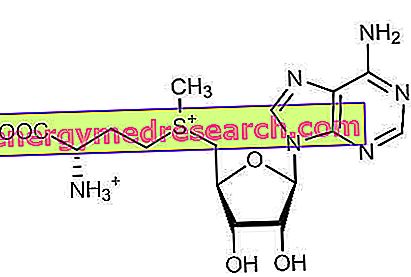Watch the video
X Watch the video on youtubeFever: Friend or Enemy?
High fever is often treated inappropriately by patients, driven by misconceptions and fears that it may cause permanent brain damage. In reality this danger becomes substantial only when rather high body temperatures are reached, above 41-42 ° C.

As a result, the use of antipyretics in healthy adults can be considered superfluous when the fever does not reach 40 ° C. Furthermore, the symptomatic treatment is of secondary importance with respect to the determination of the causes; for example, if the fever rise is caused by the inflammation of the membranes lining the brain (meninges), the risk of permanent and irreversible neurological lesions is also present for temperatures below 40 ° C.
The patient should not therefore be frightened by the high fever itself, but by the concomitant onset of specific symptoms such as (in the case of meningitis) drowsiness, irritability, headache, muscle stiffness, hypersensitivity to light, rash (in bacterial forms) and possible convulsions (children).
In pneumonia, a continuous-remitting fever is accompanied by cough, shortness of breath and polypnea (increased respiratory rate with short breaths).
Faced with a high fever, we should not ask ourselves the question " how to lower it ", but rather ask ourselves " what caused it? "
All this to remember that high fever is not a disease, but a defensive reaction of the body to the attack of bacteria or viruses. Not surprisingly, a consistent local or systemic rise in body temperature is also used for therapeutic purposes, in an attempt to destroy tumors (especially superficial ones such as melanoma); it has long been known, in fact, that hyperthermia enhances the activation of immune mechanisms, including those directed against cancer cells. For this purpose, specific machines are used that are able to overheat, up to 42-43 degrees Celsius, parts of the body or the entire body for an average time of 90 minutes.
Fever is not a disease in itself, but a powerful means by which the body reacts to the disease
When to Use Drugs
Antipyretics, first of all paracetamol, should be used in moderation, reserving them for those episodes of really high, prolonged or poorly tolerated fever; this is the case of the so-called "subjects at risk", such as heart patients, the elderly, diabetics, debilitated patients or those with respiratory or renal insufficiency, for whom it is good to limit excessive increases in body temperature.
Treatment with antipyretic (or febrifuge) in healthy adults should be considered a must only for severe hyperpyrexia (> 40 ° C)
What drugs to choose
| Classification | Value in ° C |
|---|---|
| subfebbrile | 37 - 37.4 |
| low-grade fever | 37.5 - 37.9 |
| moderate fever | 38 - 38.9 |
| high fever | 39 - 39.9 |
| hyperpyrexia | > 40 |
Paracetamol or acetominophen (Efferalgan, Sanipirina, Tachipirina) is the drug of choice, as it has a strong antipyretic and analgesic power (pain reliever); however, in high doses it can damage the liver. The dosage in the adult is 300/500 mg every 4/6 hours; paracetamol can become dangerous at doses above four grams per day (in general it is advisable not to exceed 2.6 g / day); in the presence of liver disease it is preferable to use aspirin.
Aspirin and other NSAIDs - such as oxicams (eg naproxen - Aleve, Momendol), ibuprofen (eg Moment, Antalgil, Nurofen) and diclofenac (eg Novapirina) - exhibit a powerful anti-inflammatory and antipyretic effect . The dosage of aspirin as febrifuge in adults is 1.5-2 grams per day, divided into four doses; that of ibuprofen is instead of 400-600 mg every six hours. Aspirin should not be given to children under the age of 14 (for whom paracetamol or alternatively ibuprofen is more suitable); like all NSAIDs, these medicines should not be used in the presence of gastritis, peptic ulcer disease, asthma, coagulation disorders, chronic serious heart or kidney diseases. Further contraindications and drug interactions are reported in the respective illustrative leaflets
. For all these reasons, these NSAIDs are considered second choice antipyretics, therefore to be used only in cases where paracetamol is not well tolerated.
- For the treatment of fever in the child consult the specific article within the site.
- For general information on antipyretic drugs consult the specific article on the site.
Sponging and Other Recommendations
In the presence of particularly high fever, the use of physical means such as sponging and bathing of lukewarm water can be useful to favor the descent of the body temperature, but only after the preliminary intake of antipyretic drugs.
Supportive medical therapy, always useful in case of high fever, involves bed rest combined with classic recommendations: consumption of easily digestible meals, abundant water and salt intake (fruit juices, to be avoided in the presence of concomitant diarrhea), and smoking and alcohol abstention.



